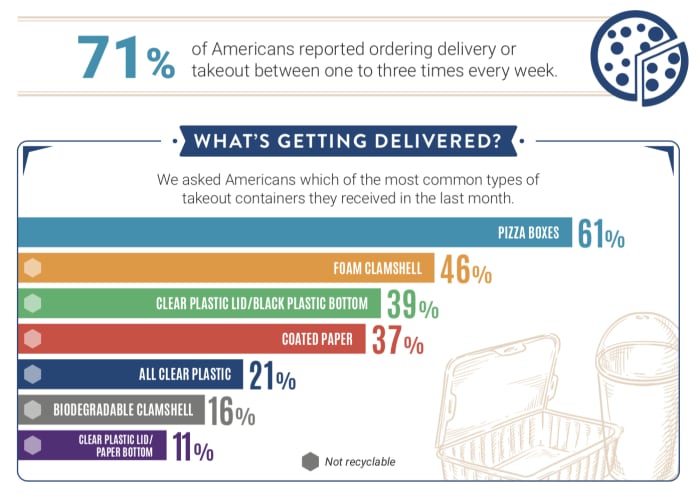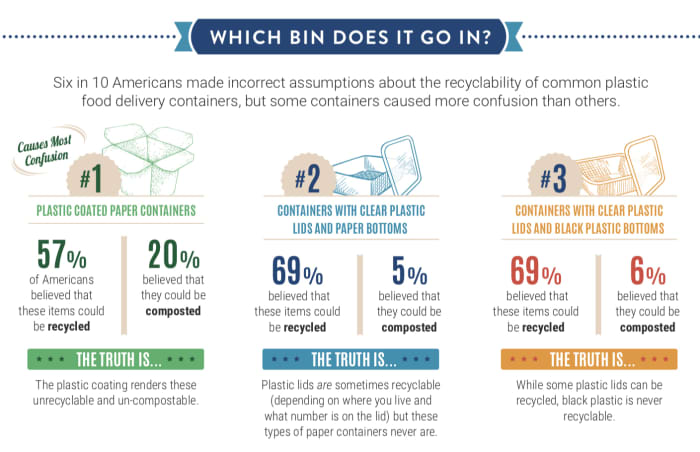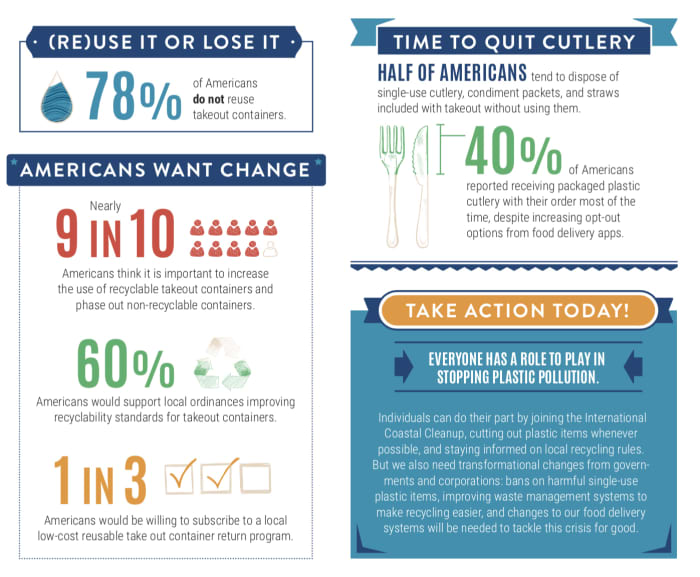This post was originally published on this site
Americans may have the best intentions when it comes to recycling. We’re just not that good at it, despite decades of trying.
In part, many consumers are confused by what types of plastics, paper and other materials can be recycled and we clog up municipal programs when guessing incorrectly. Or, many of us generally remain too lazy or too busy to make purchasing decisions that will sharply reduce the containers we use, or take an extra beat when tossing out the trash to separate and rinse the refuse that might have a second (or third) life.
From the industry standpoint, making clean plastic remains less expensive, so there’s not a lot of pure economic incentive for plastics to go away.
All of these factors are, in fact, true, but if knowledge is power, we can all stand to learn more about recycling basics. The issue is attracting attention on social media and among recycling advocates as Monday marks “America Recycles Day” and as a major U.N. global conference on climate change, pollution and ocean health wrapped in Scotland over the weekend.
In a survey conducted as part of the Ocean Conservancy’s 2021 International Coastal Cleanup (ICC) report out earlier this year, the organization found that on average, six in 10 Americans made incorrect assumptions about the recyclability of common plastic food delivery containers.
The group is sensitive to the fact that consumers are typically misled, or differences in recycling are so technical, that common sense goes out the door. The Ocean Conservancy says clearer communication from industry will help, and it urges consumers who care about recycling to petition local government for better collection systems and tougher ordinances for the types of containers restaurants can use.
“You wouldn’t know by looking at them, but most takeout containers aren’t recyclable. Despite featuring the ‘chasing arrows’ symbol, which has become synonymous with recyclability, most of these products aren’t accepted in the recycling across many communities — talk about confusing,” said Nick Mallos, senior director of Ocean Conservancy’s Trash Free Seas program.
Mallos said the reduction in the amount of single-use plastic being produced will take some of the burden off consumers, but Americans also need to make sure the plastic waste we do produce isn’t destined for landfills or our oceans.
One tool is the University of Georgia’s “Can I Recycle This” site, which can help make it easier to figure out which bin your trash goes in.
Confusion over recycling is made worse by the sheer surge in the number of takeout containers used in the U.S. Americans were already ordering takeout food at an increasing rate before the pandemic, McKinsey reports, but restaurant restrictions during COVID-19 accelerated the trend. The pandemic shutdown more than doubled the business for food-delivery apps and that doesn’t even factor in diners willing to pop into their favorite eateries and carry out their order.
Read: Takeout and dining out has never been so popular – how U.S. restaurants survived and now thrive

Credit: Ocean Conservancy
The figures show that many times we’re overconfident about what can be recycled. Even the components of a particular container fall under different rules. For instance, black plastic cannot be recycled, while some clear plastic lids can.

Credit: Ocean Conservancy
Ocean Conservancy says its recent poll found that one in six Americans support the passage of local ordinances improving recyclability standards for food delivery packaging so that consumers are empowered to recycle better.
Other potential changes are detailed in the graphic below.

Credit: Ocean Conservancy
How does the Ocean Conservancy collect its data? Since the first ICC convened in 1986, nearly 17 million volunteers have collected over 357 million items from beaches and waterways, all the while recording their findings and contributing to the world’s largest marine debris database, the group explained.
Analysis of the 17 most commonly collected items — including cigarette butts, plastic wrappers, plastic bottles, plastic bottle caps, straws and stirrers — found that the bulk of the trash collected by volunteers are not recyclable in most circumstances.
For this latest analysis, Ocean Conservancy took a look at takeout recycling challenges. For that, they broadly defined recyclability as items that are accepted and processed by curbside recyclers in the United States. Items such as plastic food wrappers and bags, which technically can be handled by specialty processers but rarely are in practice, were considered not recyclable.


